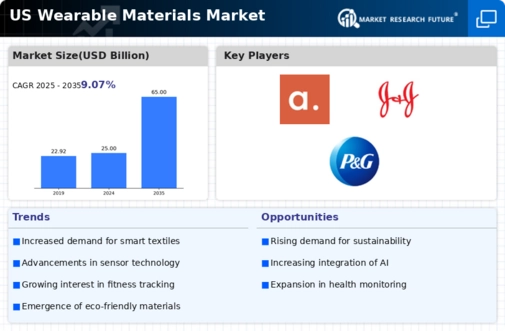US Wearable Materials Market Summary
The US Wearable Materials market is projected to grow significantly from 25 USD Billion in 2024 to 65 USD Billion by 2035.
Key Market Trends & Highlights
US Wearable Materials Key Trends and Highlights
- The market is expected to experience a compound annual growth rate (CAGR) of 9.07% from 2025 to 2035.
- By 2035, the market valuation is anticipated to reach 65 USD Billion, indicating robust growth potential.
- In 2024, the market is valued at 25 USD Billion, reflecting a strong foundation for future expansion.
- Growing adoption of wearable technology due to increasing health awareness is a major market driver.
Market Size & Forecast
| 2024 Market Size | 25 (USD Billion) |
| 2035 Market Size | 65 (USD Billion) |
| CAGR (2025 - 2035) | 9.07% |
Major Players
Apple Inc (US), Microsoft Corp (US), Amazon.com Inc (US), Alphabet Inc (US), Berkshire Hathaway Inc (US), Meta Platforms Inc (US), Tesla Inc (US), Johnson & Johnson (US), Visa Inc (US), Procter & Gamble Co (US)













